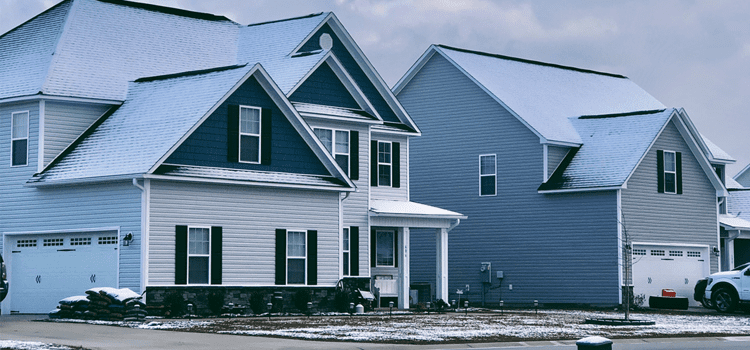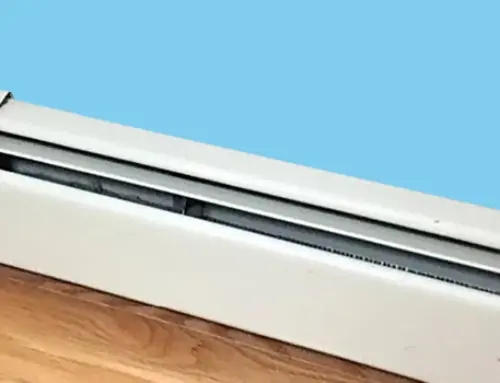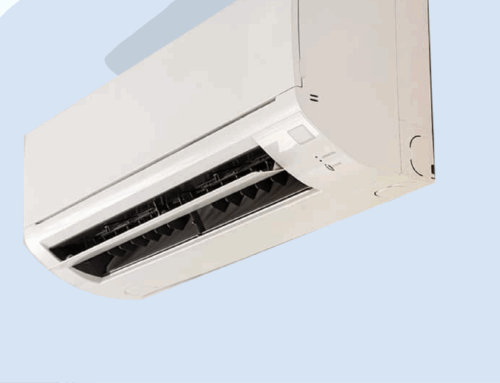16 Tips on How to Boost your Energy Efficiency for Every Season
by Tyler Castle
7.7 min read

As the seasons change, so do our energy needs for optimal performance at home. It’s important that through every season we strive for energy efficiency. Energy efficiency can help reduce your carbon footprint and help make your home more comfortable. Here are 16 tips to help maximize your energy efficiency no matter the season. Get the most out of your energy for your home!
16 Energy Efficient Tips for the Change in Seasons
- Take advantage of the Sun
- Weatherize your home
- Find and seal air leaks
- Schedule routine service for your heating systems
- Replace furnace and heat pumps
- Consider a switch to an Earth-Friendly Natural Gas Energy Plan
- Use dishwashers and clothes washers/dryers at night
- Walk or bike to local locations
- Air dry your clothes
- Take colder showers
- Use the microwave over an oven
- Close your refrigerator or freezer door
- Change your light bulbs
- Unplug your electronics and chargers
- Install a programable thermostat or “Smart” Thermostat
- Turn off the lights when they’re not in use

Energy Efficient Tips for When the Temperature Drops
The cold winter months are the perfect time to start taking advantage of energy efficiency initiatives, especially if you’re looking to save some money on your monthly bills.
1. Take Advantage of the Sun:
- Use the sun’s natural warmth to keep your house warm without overusing electricity.
- In cooler seasons, about 76% of sunlight that falls on standard double-pane windows enters to become heat.
- Be sure to keep your curtains and shades open during cooler months to maximize your heat consumption through your home.
2. Weatherize your Home:
-
Weatherization, weatherproofing or winterization can help protect your home’s interior from outside elements.
- According to the EPA, weatherization can help improve air quality in your home. Weatherproofing can involve insulation upgrades, mitigating moisture levels and more!
- In some states where cold weather is more common, there are Home Weatherization Assistance Programs that help low-income residents protect themselves from the elements.
3. Find and Seal Air Leaks
-
The EPA estimates that homeowners can save an average of 15% on heating costs.
- Add caulk and weather strips to your windows and doors that are leaking air.
- Hire a qualified technician to conduct an energy assessment or a blower door test which depressurizes a home and can reveal leaks.
4. Schedule Routine Service for your Heating Systems
-
Scheduling maintenance on your heating systems can reduce your need for repairs and expands the life of your unit.
- Regular maintenance improves the airflow of your system.
- Scheduling a service early on in the season before the seasons change gives you peace of mind knowing you’re prepared for the ugly parts of winter. Don’t get caught in the winter storm unprepared!
5. Replace Your Furnace or Heat Pumps if Necessary
-
When temperatures drop during winter months, an old heating system will have to work harder to keep your home warm. Which wastes more energy than you need.
- Investing in an energy-efficient heat pump can help you save money compared to electric resistance heating such as furnaces.
- Old furnaces have a tough time working in extremely cold temperatures and are more vulnerable to breakdowns.
6. Consider a switch to Earth-Friendly Gas Energy Plan
-
Earth-Friendly Gas is a natural gas option that allows you to enjoy all the benefits of your energy service while helping to create ecological balance in the world.
- Santanna Earth-Friendly Gas plans help you help the planet by carbon offsetting: making up for our emissions here by reducing emissions elsewhere. So, simply by heating your home, you can be helping the planet.

Energy Efficient Tips for When the Temperature Rises
As temperatures rise during the summer months, it’s important to be mindful of energy efficiency. Small changes can make a big impact in reducing your home’s environmental footprint! Here’s some of our best tips to help:
1. Uses dishwashers and Clothes Washers/dryers at Night
-
Using these appliances during later hours of the day can keep your house cooler.
- During the day, electricity rates tend to be higher in the summer due to air conditioning needs, while rates drop off substantially at night.
2. Walk or Bike to Local Locations
- Walking or biking reduces your reliance on cars and other gas-powered transportation.
- Choosing to walk or bike to local locations can reduce your overall carbon footprint and reduce air pollution for all!
- Even walking to local bus stops to take public transportation can help reduce your carbon footprint and help you stay energy efficient.
3. Air Dry Your Clothes When Possible
-
Air drying your clothes reduces the heat in your house from using an electric dryer.
- Controlling moisture can make your home more energy efficient. If you choose to air dry your clothes indoors, it can increase the moisture in your home. If you dry your clothes outdoors, the moisture is sent back into the air which is environmentally friendly too!
- Air drying your clothes can lower your overall energy demand from your appliances.
4. Take Cold Showers
-
Cold showers eliminate the need to heat water and can help conserve energy resources.
- Hot showers create steam and humidity making for a warmer environment in your home. This can force your air conditioner to work harder.
- Cold showers may lead to shorter shower durations which can conserve water for your home and reduce your water bill in the long run!
5. Use the Microwave over an Oven
-
Microwaves generate significantly less heat compared to traditional ovens. This can help keep your kitchen and home cooler.
- Microwaves typically use less energy than ovens and cook your food faster! This results in lower energy bills and time wasted heating up your oven.
- Oven can lose heat quickly when you open oven doors or if your appliance is old.
6. Close Your Refrigerator or Freezer Door
-
According to The Institute of Food and Agriculture Sciences at the University of Florida, keeping your refrigerator open can waste 50 to 120kWh a year.
- Excessive door opening of your freezer or fridge can lead to frost build-up on your shelves or cooling coils. This can lead to a prolonged clean-up process resulting in your doors to be open longer which leads to more wasted energy.
- Keeping your fridge or freezer doors open for a long period of time can force your appliances to work harder, which decreases their efficiency.

Energy Tips for Year-Round Efficiency
Taking energy efficiency tips to heart can make achieving your energy goals much easier and more sustainable! There are simple steps you can take to reduce energy usage while making sure you stay comfortable no matter the season. Read on for energy efficiency tips that will help you keep your home feeling just right all year round.
1. Change your Light Bulbs
-
LED light bulbs use significantly less energy than traditional incandescent or even CFL bulbs. This results in reduced electricity bills and overall energy consumption.
- LED bulbs have a much longer lifespan compared to incandescent and CFL bulbs. They can last up to 3 to 5 times longer than a CFL and 30 times longer than an incandescent bulb.
- LED bulbs emit very little heat compared to incandescent bulbs.
2. Unplug your Electronics and Chargers
-
Even on standby, your computer can waste 1 to 60 watts of energy a day.
- According to Stanford Magazine, a fully charged cell phone plugged into the wall consumes about 2.24 watts, or 60 percent of the power it consumed while charging.
- Electronics that stay plugged in can experience wear and tear over time due to constantly using energy. Unplugging your device can extend its lifespan and reduce the need for replacements.
3. Install a Programable or “Smart” Thermostat
-
Many smart thermostats connect to Wi-Fi which can allow you to schedule your heating and cooling preferences throughout the year. This can help you save money and conserve energy in the long run.
- Some smart thermostats allow you to create zones in your home and customize temperatures for each zone. This targeted approach minimizes energy waste by only conditioning occupied areas.
- Many smart thermostats provide data on your energy usage patterns, helping you identify opportunities for further energy conservation.
4. Turn off the Lights When They’re Not in Use
-
Turning off lights when they’re not needed directly reduces energy consumption, leading to lower electricity bills and decreased overall energy use.
- Reducing the heat emitted by lights can lower the load on cooling systems during hot months
- Turning off lights in common areas, such as hallways and bathrooms, can lead to significant collective energy savings for households with multiple occupants.
No matter the season, we hope you feel prepared to make your home more energy-efficient! From utilizing the sun’s warmth during colder months to optimizing your thermostat settings and unplugging electronics, these practices contribute to sustainability, lower energy consumption, and an eco-friendlier lifestyle. Consistently making these choices helps create a positive impact on the environment while ensuring year-round comfort and energy savings!
Santanna Energy Services is a supplier of renewable energy solutions in the United States, providing services to Illinois, Indiana, Pennsylvania, Michigan, and Ohio. We provide a wide range of energy services and products to meet the needs of both residential and small business customers. Our mission is to provide innovative and cost-effective energy solutions that will help our customers achieve their energy goals. With over 35 years of experience, we are committed to creating life-long relationships by providing quality service to customers, communities, and employees.
Tyler is an experienced energy professional, having worked for Santanna Energy Services, for the past four years. He is passionate about renewable energy and believes that diversifying the energy grid is the key to a sustainable future. Tyler is dedicated to supplying consumers with the best possible energy solutions and works diligently to make sure that Santanna can deliver the highest quality service.







